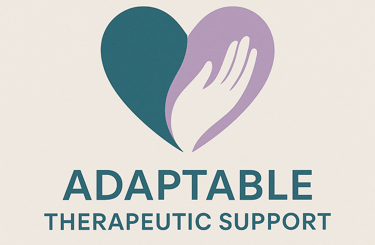What Is Somatic Memory? Understanding How the Body Remembers What the Mind Forgets
Discover what somatic memory is, how the body stores trauma, and how somatic therapy helps release stored emotions for lasting healing.
Have you ever had a strong physical reaction to something — a smell, a sound, or a place — and didn’t understand why?
Maybe your chest tightened, your stomach dropped, or you suddenly felt anxious for no clear reason.
That’s the body remembering.
This is what we call somatic memory — the way our body holds on to experiences, especially those linked to trauma, stress, or emotional pain.
In this post, we’ll explore what somatic memory is, how it forms, and how understanding it can help you heal.
What Is Somatic Memory?
The word somatic comes from the Greek soma, meaning body.
So somatic memory refers to the memories that are stored not just in the brain, but in the body itself — in sensations, muscle tension, posture, and automatic responses.
While we often think of memory as something purely mental (images, thoughts, or stories), the truth is that our nervous system and body also store experiences.
This is especially true when something overwhelming happens — an event that felt too much, too fast, or too unsafe to process at the time.
In these moments, the body remembers how it felt — even if the mind tries to forget.
How the Body Stores Memory
When we experience trauma, the amygdala (the brain’s alarm system) becomes highly active, alerting the body to danger. The fight, flight, freeze, or fawn response kicks in, releasing stress hormones and preparing us to survive.
But if that energy doesn’t have a chance to complete its natural cycle — for example, if we couldn’t escape, speak up, or defend ourselves — it can remain stored in the body as unfinished activation.
This stored survival energy may later appear as:
Chronic muscle tension
Digestive issues
Shallow breathing or holding your breath
Startle responses or hypervigilance
Emotional numbness or dissociation
Sudden panic or distress without a clear trigger
These aren’t “overreactions.” They’re echoes of your body’s memory — your system trying to protect you from something it still perceives as unsafe.
Examples of Somatic Memory in Everyday Life
Somatic memory can show up in subtle or powerful ways. You might notice:
Feeling uneasy around someone who reminds you (even unconsciously) of a past harmful person.
Tensing your body whenever someone raises their voice.
Having physical pain or nausea when recalling a distressing event.
Becoming tearful or restless without knowing why when in a certain environment.
These reactions are your body communicating information that your conscious mind may not yet have connected.
The Science Behind Somatic Memory
Research in neuroscience and trauma psychology supports the idea that memories aren’t stored in one place — they’re distributed across networks involving the brain, body, and nervous system.
Key insights include:
The amygdala stores emotional intensity.
The hippocampus records context and sequence, but trauma can disrupt its function — making it hard to tell that the event is over.
The body and sensory systems retain implicit memory — sensations, reflexes, and emotions tied to the event.
That’s why trauma can feel timeless — your body reacts as though the danger is happening right now, even when you’re safe.
Healing Somatic Memory
Healing somatic memory means helping the body release what it’s been holding — slowly, safely, and with support.
This isn’t about “reliving” trauma; it’s about giving your nervous system permission to complete what it couldn’t before.
Trauma-informed and body-based therapies can be very helpful, such as:
Somatic Experiencing (SE) — gently tracks body sensations to release stored survival energy.
EMDR (Eye Movement Desensitisation and Reprocessing) — helps reprocess traumatic memories and calm the body’s response.
Sensorimotor Psychotherapy — integrates mindfulness, body awareness, and talk therapy.
Trauma-informed yoga or breathwork — helps reconnect safely with the body.
Simple grounding practices — like feeling your feet on the floor, naming sensations, or noticing your breath — can also support regulation between sessions.
Learning to Trust the Body Again
For many trauma survivors, the body can feel like an unsafe place.
Somatic healing is about rebuilding a relationship of trust with your body — learning that sensations are messages, not threats.
It’s about gently reconnecting with yourself and understanding that the tension, fatigue, or emotion you feel isn’t “crazy” or “dramatic” — it’s communication from a system that has been working hard to keep you alive.
With time, awareness, and the right support, somatic memories can be safely integrated. The body can learn that it’s no longer in danger.
Final Thoughts: Your Body Remembers, But It Can Also Heal
Somatic memory reminds us that healing isn’t just a mental process — it’s a full-body journey.
Your body carries wisdom and resilience. The same system that once held pain also holds the potential for deep healing and peace.
When you approach your body with curiosity and compassion — rather than fear or frustration — you begin to unlock that healing potential.
If You’re Ready to Explore Somatic Healing
If you’re curious about working with your body as part of trauma recovery, I offer trauma-informed therapy that gently integrates body awareness, emotional regulation, and evidence-based approaches like EMDR.
You deserve to feel safe in your body again — one grounded breath, one gentle step at a time.
[what is somatic memory, trauma stored in the body, somatic therapy, body memory, somatic trauma healing, mind-body connection, trauma and nervous system, somatic experiencing, body-based therapy, trauma recovery]
Darwin, NT - with virtual services nationally
info@adaptablesupport.com
© 2025. All rights reserved.
